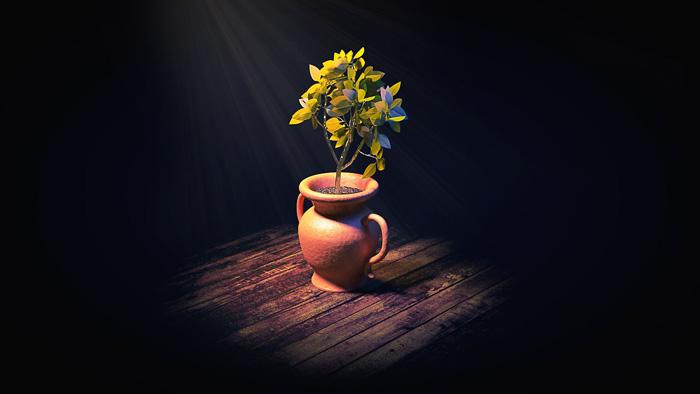Growing Pothos Plants in Your Garden
With its low light and water needs, many people consider pothos to be the easiest houseplant to grow. You can choose from a variety of different pothos plants, including those with dark green leaves and those with yellow or white and green leaves. Most pothos will survive in low light conditions, but variegate varieties often need a bit more light. Once your pothos is established, you can take cuttings of the plant to create new plants to grow at home or give to friends.
>> Check out pothos plants on Amazon <<
Varieties of Pothos
Depending on your preferences, you can choose from a wide range of pothos varieties. Although all varieties of pothos feature the same spade shaped leaves and long, trailing vines, the color and size of the leaves can differ from variety to variety.
Here are a few you might see for sale in your local garden center:
- Golden Pothos. Golden pothos is a variegated variety that has green and yellow tinted leaves.
- Manjula Pothos. Manjula is another variegated variety of pothos. Its leaves are a creamy white with streaks of green.
- Marble Pothos. Marble pothos has a considerable amount of variegation on its leaves. The leaves can look mostly white with flecks of green.
- Jade Pothos. In contrast to variegated varieties, jade pothos has deep, dark green leaves.
- Satin or Silver Pothos. Satin pothos, also known as silver pothos, has dark green leaves that are flecked with stripes or spots of silver-grey. The plant’s leaves are fuzzier than other varieties of pothos.
- Neon Pothos. True to its name, neon pothos has bright, vibrant green leaves.
- Cebu Blue Pothos. The leaves of cebu blue pothos are narrower than other varieties. They are blue-green with some silver or white markings.
The video above, from eHow Garden, lets you see the difference between a few different varieties of pothos, so that you can choose the type that best complements your decor or tastes.
One thing that’s worth noting about pothos is that different varieties will have somewhat different care needs. The plant generally does well in low light conditions, for example. But variegated varieties typically need higher levels of light to maintain their variegation.
In a dim or dark room, a marble pothos or golden pothos might develop leaves that are more of a solid green color, rather than yellow or white striped. To compensate for the reduced light levels, the plants will produce more chlorophyll, creating greener leaves.
>> Get your own pothos plant from Amazon <<
Growing Pothos Plants in Soil
You can grow pothos in either regular potting mix or soil or in a glass of water. The plant has a reputation for being easy to grow because it can take a bit of neglect in either instance. If you are going to plant pothos in soil, in a container, be sure to choose a container mix. Don’t try to use soil from your garden.
Container soil is actually not real “soil” at all. Instead, it’s a mix of ingredients, such as compost, perlite, coconut fibers, and peat moss, that is designed to drain easily and provide adequate nutrition. If you put garden soil into a container, it will end up forming a solid clump that will strangle the roots of the plant.
Choose a spot in your home for pothos that’s away from direct sunlight. Pothos isn’t too picky about light, but its leaves can burn if you put it directly in a sunny window. A north facing window or off to the side of a south facing window can be ideal. The plant will also do OK in windowless room, as long as there is some source of artificial light in the room.
Pothos isn’t fussy about water, but it will let you know if it’s not getting enough or if you’re overwatering it. It can suffer from root rot if you give it too much water, according to Houzz. Signs of root rot include yellowing leaves that eventually drop off.
When the plant is thirsty, its leaves will droop a bit. Although it’s best to water the plant when you first notice that its soil is dry, if you let it go for a bit between waterings and it does wilt, it should bounce back easily once you give it a drink.
Growing Pothos Plants in Water
You can also successfully grow pothos without any soil at all. The plant will grow and grow if it is rooted in a glass of water. The trick to growing pothos in water is to start with a cutting that you root in water. It is more difficult to transfer a soil-grown pothos to water than it is to root a cutting in water, according to GardeningKnowHow.
Once the plant has established itself in water, all you need to do to care for it is make sure the glass or vase has a consistent level of water. Don’t let all the water evaporate. You might want to change all of the water in the container every week or so and give the plant a fresh drink.
>> Buy a pothos plant on Amazon <<
Taking Cuttings of Pothos Plants
If you want more pothos, or if your pothos plant is getting unruly, you can take cuttings of the plant to create clones of it. Taking cuttings of pothos is relatively simple. All you need to do is cut a length of the stem, pull of the bottom leaves and place the stem in either a glass of water or a pot of soil.
https://youtu.be/xdhFvP_wzbI
The video above from Pear’s Plants shows you how easy it is to cut take cuttings of your pothos plant. One thing she doesn’t mention in the video is to make sure that your cuttings have a small node, or bump, somewhere on the stem. The nodes produce roots and are usually located near the base of the leaves. If your stem doesn’t have any nodes in contact with the soil or water, it won’t produce new roots.
It doesn’t matter if you put your cuttings in soil or water. Just keep in mind that whereever you start the plant is where it will end up. If you want to grow pothos in water, start the cutting in water. If you plan on growing it in soil, root the cutting in soil.


